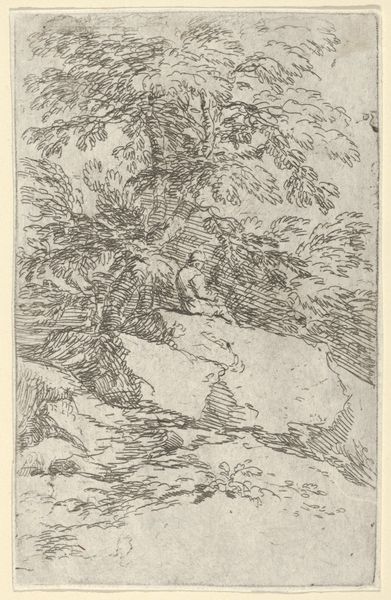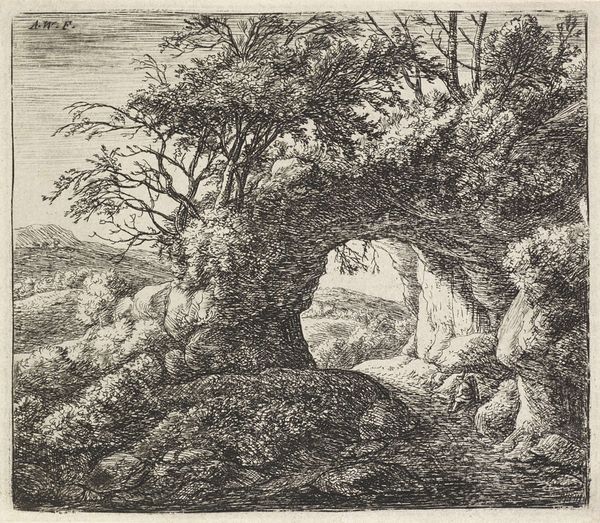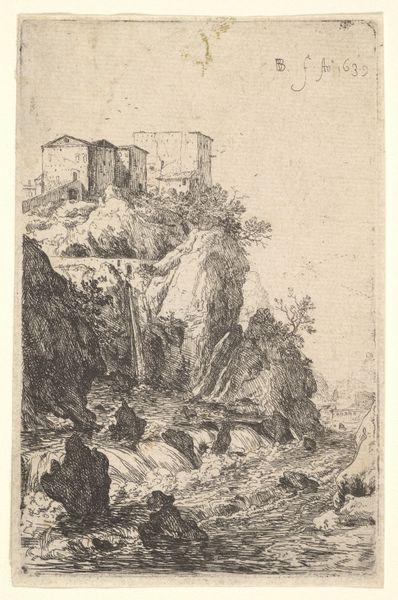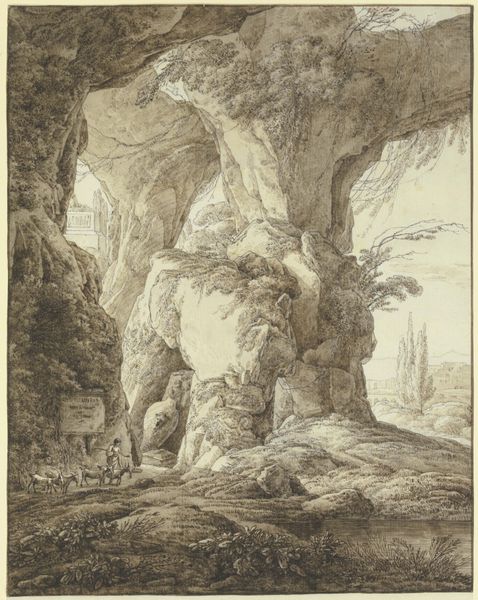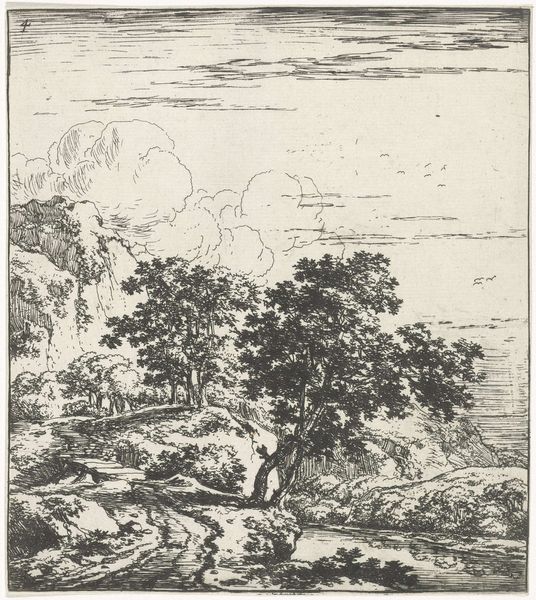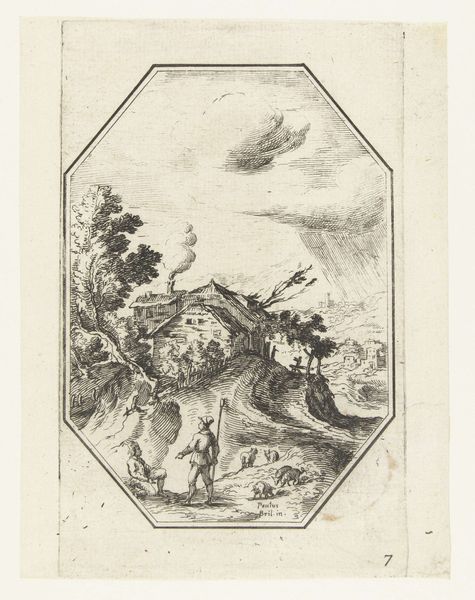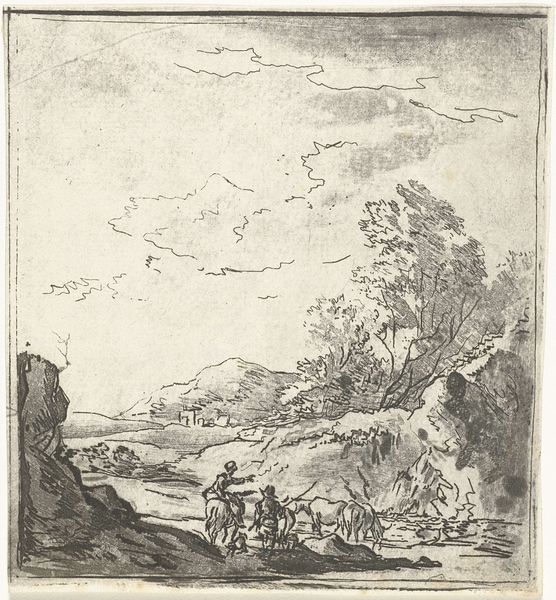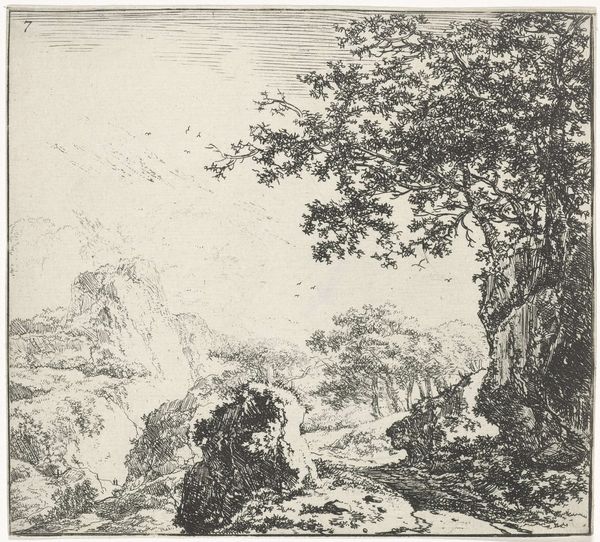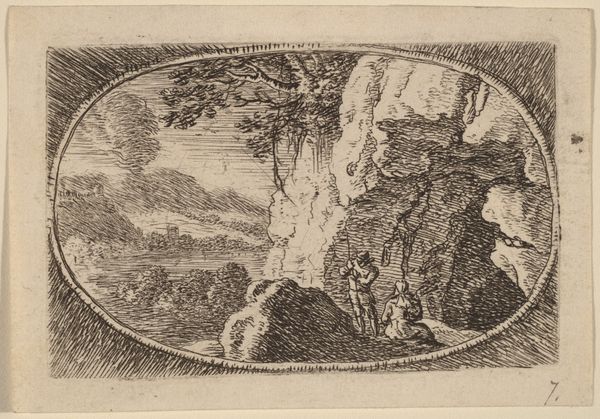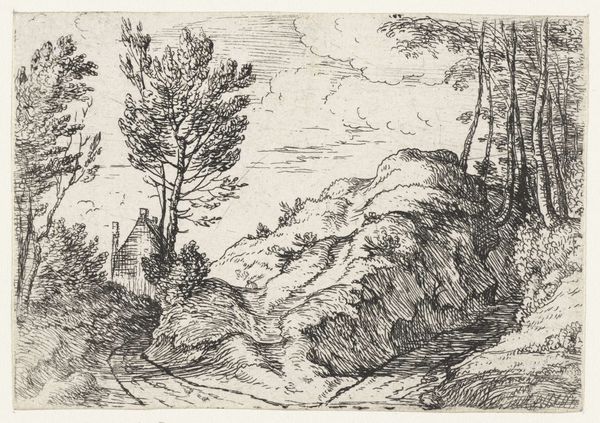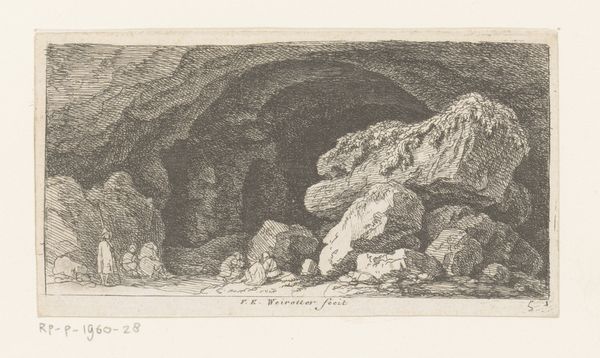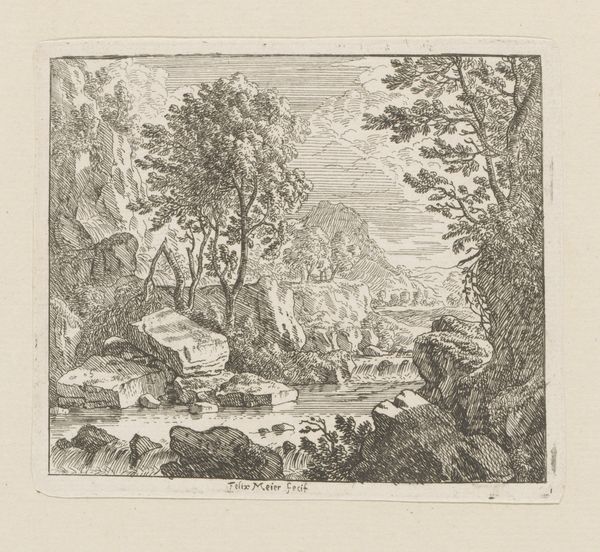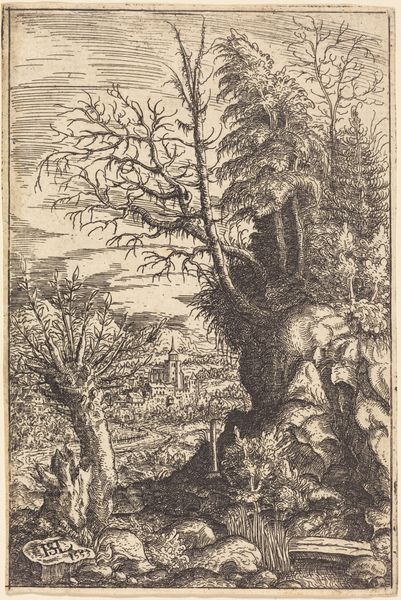
#
pen sketch
#
pencil sketch
#
old engraving style
#
etching
#
personal sketchbook
#
ink drawing experimentation
#
pen-ink sketch
#
pen work
#
sketchbook drawing
#
sketchbook art
Dimensions: height 77 mm, width 65 mm
Copyright: Rijks Museum: Open Domain
Curator: Alright, let's dive into this intriguing little etching. This is "Ingang van een grot met drie figuren," or "Entrance of a Cave with Three Figures," created sometime between 1798 and 1837 by Ernst Willem Jan Bagelaar. What strikes you first about it? Editor: Honestly, it looks like a portal! A rough-and-tumble escape hatch drawn with furious lines. It's dark, yes, but those figures huddling near the cave mouth seem almost… festive. Curator: "Festive" is an interesting take. The artist was clearly experimenting here, working with rapid pen strokes to suggest texture and depth. The subject, a cave entrance, seems to beckon the viewer inward, yet the shading keeps things ambiguous. Consider how popular Romanticism was during this time. Editor: The kind of Romanticism that romanticized being scared witless? Yes! Because that sketchy opening really feels unsettling—all those jagged strokes. But then, further back, you get this delicately rendered gazebo! Such a strange juxtaposition of terror and leisure. I'm feeling quite conflicted. Curator: Perhaps that's the point. Bagelaar might have been playing with the idea of nature's sublime power against humanity's attempt to tame it. That gazebo symbolizes cultivated space. Think of the political climate of the early 19th century—revolution, social upheaval, but also increasing wealth. Editor: So the drawing becomes this kind of quiet class commentary? The wealthy can play at the edge of chaos because they know they can retreat to their little garden structures. It certainly makes one wonder what Bagelaar was attempting. What the drawing wanted to communicate. It's like an early graphic novel panel where everything happens in a second but is layered with time. Curator: Exactly. A single scene hinting at vast narratives. In this tiny etching, Bagelaar encapsulates grand societal forces at play. Editor: I still think it feels a little like a magical portal waiting to take you… somewhere complicated. Thank you for enriching how I look at the artwork. Curator: And thank you for voicing a first impression to bring our conversation to a rich level of social perspective.
Comments
No comments
Be the first to comment and join the conversation on the ultimate creative platform.
